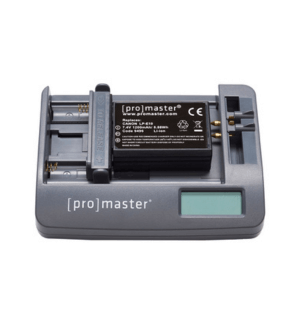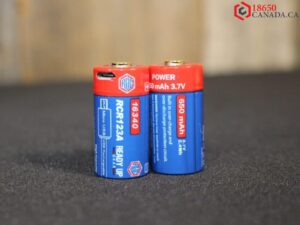In this article, we delve into the art of charging lithium-ion batteries. Lithium-ion batteries have become essential power sources in our daily lives, powering devices from smartphones to electric vehicles. To maximize their performance and longevity, it is crucial to understand proper charging techniques. We explore the benefits of mastering lithium-ion battery charging, including enhanced battery performance, improved safety, and cost savings.
Lithium-ion batteries have become an indispensable power source in our modern lives. From smartphones and laptops to electric vehicles and renewable energy storage, these rechargeable batteries offer a lightweight, high-energy-density solution. However, to maximize their performance, it is crucial to understand and master the art of lithium-ion battery Charging. In this article, we will explore the best practices, common mistakes to avoid, and safety considerations for effectively charging lithium-ion batteries.
The article covers best practices such as using the right charger, avoiding extreme temperatures, charging to the correct voltage, and preventing overcharging and undercharging. It also highlights common charging mistakes to avoid and provides tips for efficient charging.
Safety considerations, such as avoiding physical damage, protecting against overheating, and proper battery storage, are discussed. By following these guidelines, readers can optimize their lithium-ion battery charging routines and unlock the full potential of their batteries.
Understanding Lithium-Ion Batteries
What are Lithium-Ion Batteries?
Lithium-ion batteries are a type of rechargeable battery that uses lithium ions to move between the positive and negative electrodes during charging and discharging cycles. Compared to other battery technologies, lithium-ion batteries offer several advantages such as high energy density, low self-discharge rates, and a lack of memory effect.
Advantages of Lithium-Ion Batteries
Lithium-ion batteries have revolutionized portable electronics and various industries due to their numerous advantages. These include:
High energy density: Lithium-ion batteries provide a higher energy density than other rechargeable batteries, making them ideal for portable devices and electric vehicles.
Low self-discharge: Lithium-ion batteries have a lower self-discharge rate, allowing them to hold their charge for longer periods when not in use.
Lightweight and compact: Lithium-ion batteries are lightweight and have a compact design, making them convenient for portable devices.
No memory effect: Unlike older battery technologies, lithium-ion batteries do not suffer from the memory effect, where repeated partial discharge and recharge reduce their capacity.
Unleashing the Potential of PANASONIC/SANYO NCR18650GA Lithium-ion Battery
Mastering the art of lithium-ion battery charging requires understanding the nuances of battery technology, and the PANASONIC/SANYO NCR18650GA battery is a prime example. With its exceptional performance and reliability, this battery becomes a crucial element in the charging process.
The PANASONIC/SANYO NCR 18650GA features a high capacity and energy density, making it suitable for a variety of devices. To ensure optimal charging, it is important to follow best practices such as using a compatible charger, avoiding overcharging or undercharging, and monitoring the battery temperature.
By mastering these techniques and utilizing the PANASONIC/SANYO NCR 18650GA battery, you can unlock the full potential of your lithium-ion battery and prolong its lifespan while maximizing its performance.

The Importance of Proper Charging
Effect of Improper Charging
Improper charging practices can significantly impact the performance and lifespan of lithium-ion batteries. Overcharging, undercharging, using incompatible chargers, and exposing batteries to extreme temperatures can lead to reduced battery capacity, shorter battery life, and even safety hazards.
Benefits of Mastering Lithium-Ion Battery Charging
Mastering the art of lithium-ion battery charging offers several benefits:
Enhanced battery performance: Proper charging techniques optimize battery performance, ensuring maximum power output and longer battery life.
Improved safety: By understanding the correct charging procedures, you can minimize the risk of overcharging, overheating, and potential battery failures.
Cost savings: Proper charging practices can extend the lifespan of lithium-ion batteries, reducing the need for frequent replacements and saving you money in the long run.
Best Practices for Lithium-Ion Battery Charging
To master the art of lithium-ion battery charging, it is essential to follow these best practices:
Using the Right Charger
Using the manufacturer-recommended charger or a compatible charger specifically designed for lithium-ion batteries is crucial. Chargers with incorrect voltage or current outputs can damage the battery or lead to inefficient charging.
Avoiding Extreme Temperatures
Lithium-ion batteries are sensitive to extreme temperatures. Avoid exposing them to high heat or cold environments, as it can negatively impact their performance and lifespan. Optimal charging temperatures typically range from 0°C to 45°C (32°F to 113°F).
Charging to the Correct Voltage
Each lithium-ion battery has a specified voltage range for charging. Ensure you charge the battery to the recommended voltage to prevent overcharging or undercharging. Overcharging can cause thermal runaway and pose safety risks while undercharging can lead to decreased battery capacity.
Avoiding Overcharging and Undercharging
Overcharging lithium-ion batteries can cause stress on the internal components and lead to capacity loss over time. Conversely, frequent deep discharge and undercharging can harm the battery’s health. Aim for regular partial charges and avoid fully discharging the battery whenever possible.
Charging Cycles and Battery Longevity
Understanding Charging Cycles
Lithium-ion batteries have a limited number of charging cycles before their capacity gradually diminishes. A charging cycle typically involves charging the battery from 0% to 100% and then discharging it back to 0%. It is important to note that partial charges and discharges contribute proportionally to the overall battery lifespan.
Maximizing Battery Lifespan
To extend the longevity of lithium-ion batteries, follow these tips:
Avoid frequent deep discharges and instead aim for regular partial charges.
Keep the battery level between 20% and 80% for optimal lifespan.
If storing the battery for an extended period, charge it to around 50% to prevent self-discharge.
Common Charging Mistakes to Avoid
Using Incompatible Chargers
Using chargers not specifically designed for lithium-ion batteries can lead to improper charging, reduced battery performance, and safety risks. Always use chargers recommended by the battery manufacturer.
Charging in Extreme Environments
Exposing lithium-ion batteries to extreme temperatures, such as leaving them in a hot car or subjecting them to freezing temperatures, can cause irreversible damage to the battery cells. Avoid charging in such environments.
Ignoring Battery Specifications
Each lithium-ion battery has specific charging requirements outlined by the manufacturer. Ignoring these specifications and using incorrect charging settings can lead to overcharging, undercharging, or even battery failure.
Overcharging and Leaving Batteries Unattended
Leaving lithium-ion batteries plugged in and charging for extended periods, especially overnight, can overcharge the battery and pose safety risks. Always monitor the charging process and unplug the charger once the battery reaches its recommended voltage.
Tips for Efficient Charging
Follow these tips to optimize the charging process for your lithium-ion batteries:
Optimizing Charging Speed
Using a charger with the appropriate current output allows for faster and more efficient charging. However, be mindful not to exceed the battery’s recommended charging current, as it may cause excessive heat buildup and compromise safety.
Using Battery Management Systems
Battery management systems (BMS) are designed to monitor and control the charging process, ensuring safe and efficient charging. If available, consider using devices or chargers equipped with BMS technology.
Charging in Moderation
Avoid constantly keeping your lithium-ion battery at full charge or letting it drain completely. Instead, aim for partial charges and moderate usage patterns to maintain optimal battery health.
Regular Maintenance and Inspection
Periodically inspect your lithium-ion batteries for physical damage, such as swelling or leaks. Clean the battery contacts and ensure they are free from dirt or debris. Proper maintenance helps ensure reliable performance and longevity.
Charging Lithium-ion Batteries Safely
Avoiding Physical Damage
Handle lithium-ion batteries with care to avoid physical damage. Dropping, crushing, or puncturing the battery can lead to internal damage and safety hazards. If a battery is physically damaged, discontinue its use and dispose of it properly.
Protecting Against Overheating
Prevent lithium-ion batteries from overheating by avoiding exposure to direct sunlight, excessive heat sources, or placing them in sealed, non-ventilated compartments while charging. Overheating can degrade battery performance and pose safety risks.
Storing Batteries Properly
If you need to store lithium-ion batteries, ensure they are stored in a cool and dry environment, away from direct sunlight and extreme temperatures. It is recommended to store batteries at around 40% to 60% charge to prevent self-discharge or over-discharge.
Finale
Mastering the art of lithium-ion battery charging is essential for maximizing battery performance, longevity, and safety. By following the best practices, avoiding common mistakes, and understanding the importance of proper charging techniques, you can ensure your lithium-ion batteries deliver optimal performance and last longer. Remember to use the right charger, avoid extreme temperatures, charge to the correct voltage, and prevent overcharging or undercharging. By incorporating these guidelines into your charging routine, you can unlock the full potential of your lithium-ion batteries.
FAQs
FAQ 1: Can I Use Any Charger to Charge a Lithium-Ion Battery?
No, it is important to use the charger recommended by the battery manufacturer or a charger specifically designed for lithium-ion batteries. Using incompatible chargers can lead to improper charging, reduced performance, and safety risks.
FAQ 2: How Often Should I Charge My Lithium-Ion Battery?
There is no set frequency for charging lithium-ion batteries, as it depends on your usage pattern. However, it is generally recommended to perform partial charges rather than deep discharges and to avoid keeping the battery at full charge or fully discharging it frequently.
FAQ 3: Can I Leave my Lithium-Ion Battery Plugged in Overnight?
Leaving lithium-ion batteries plugged in overnight can lead to overcharging, which can degrade battery performance and pose safety risks. It is advisable to unplug the charger once the battery reaches its recommended voltage or charge level.
FAQ 4: Can Extreme Temperatures Affect Lithium-Ion Battery Charging?
Yes, extreme temperatures, both hot and cold, can impact lithium-ion battery charging. High temperatures can cause the battery to degrade faster, while extremely low temperatures can decrease battery capacity temporarily. It is best to charge lithium-ion batteries in a moderate temperature range.
FAQ 5: What Should I Do if My Lithium-Ion Battery Swells?
If your lithium-ion battery swells, discontinue its use immediately. Swelling indicates a potential internal issue and poses safety risks. Safely dispose of the battery following proper recycling or disposal guidelines.

